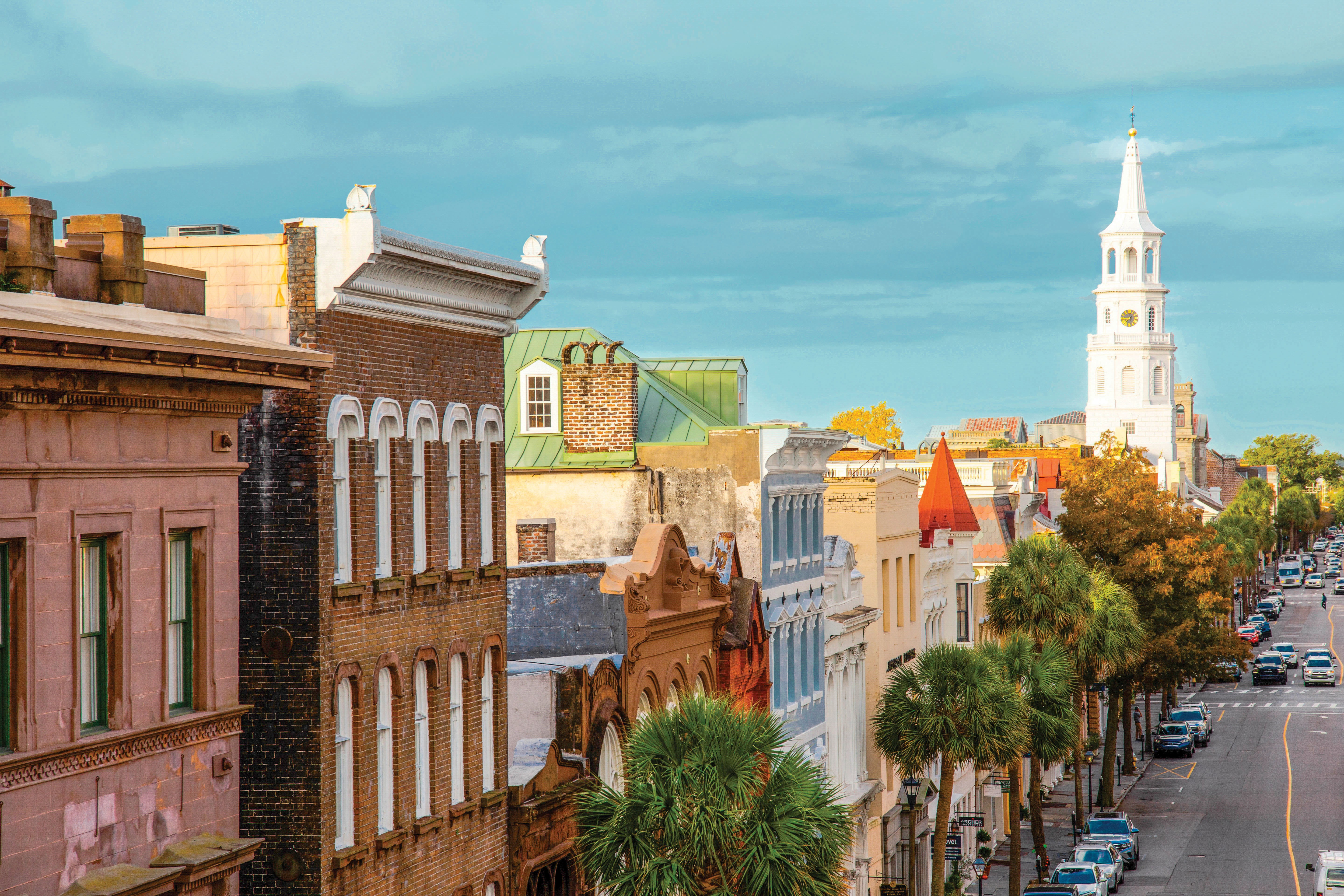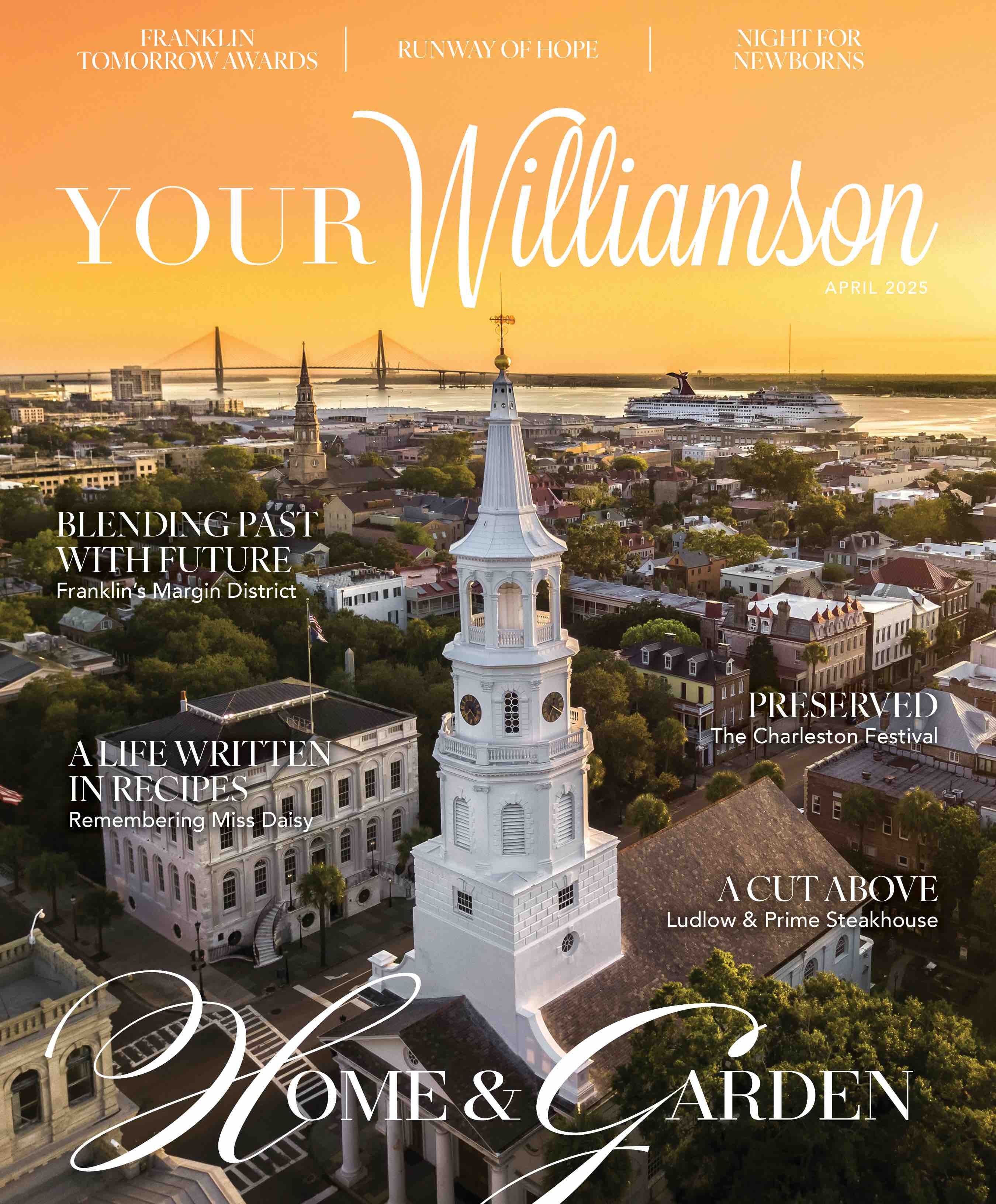


by shelly robertson birdsong | Photography courtsey of Historic Charleston Foundation - Kim Graham & Taylor Jordan Photography
There are few cities in this country, more associated with the term - preservation - than Charleston, South Carolina. It is without a doubt, the most synonymous with historic homes, churches and landmarks one can find. With its unparalleled charm, elegance and offerings of history, architecture, food and scenery, it is a city that must be taken in at least once in a lifetime. If not fifty!
HISTORY
With a history as old as our nation itself – Charleston’s significance is undeniable. In 1669, under the leadership of Captain Joseph West, three vessels; the Carolina, the Port Royal and the Albemarle set their sights on the new land, America. A severe storm separated the three ships, wrecked the Port Royal and forced the Carolina to land in Bermuda. In the Spring of 1670, 150 English colonists, indentured servants and slaves sailed into the Charleston harbor.
The first view of what would become the new colony of Carolina came in March 1670 at Bull's Island. The travelers landed on a promising location they christened Albemarle Point in April 1670. The proprietors soon flattered their king, Charles II, by insisting the settlement be named Charles Town in his honor.
Additional settlers arrived from Barbados in February 1671. By 1672, the expanding settlement recognized the advantages of relocating across the river on the peninsula land called "Oyster Point" because of the mounds of opened and discarded oyster shells left there by the Kiawah Indians. This piece of land soon attracted settlers because of its strategic location between the Cooper and Ashley Rivers. By the late 1670s, proprietors hoped to avoid the narrow, twisting streets of European cities by using the classical continental street plan. Charles Town became the first American city to use city planning where streets were laid out in "broad and....straight lines."
With its many wharfs along East Bay Street, Charles Town became a busy seaport. Ships carrying raw materials, deer skins, rice, indigo, and eventually cotton were exported to England and commerce was born. Ships returned heavy with staples and luxuries of Europe which lent a cosmopolitan air to the growing community. Even in its infancy, Charleston had the reputation of being a "Little London" in the semi-tropic wilds of the New World. By 1740, Charles Town was becoming the most critical port in North America for exporting, and an economic boom surged across the colony.
Following the Civil War, Charlestonians were too poor to remodel, so the city simply adapted her old buildings. Then, in 1886 a major earthquake rocked Charleston damaging more than 2,000 buildings. More than 100 buildings were declared unsafe and pulled down. A total of 110 people died as a result of this natural disaster. Within a year of the 1886 earthquake, proud Charlestonians boasted: "Strangers who visit the city have to hunt up traces of the earthquake, very few of which remain. Charleston has once more risen from her ashes." As a result of the earthquake, iron rods were run through the interiors of buildings and fastened to the exterior walls to protect them from future quakes. Today, these round, and star-shaped bolts remain visible on many homes and commercial buildings.
With a rich 300-year history, Charleston today is America's most beautifully preserved architectural and historical treasure. The city's past is a testament to the spirit and tenacity of its citizens. Its appeal has been described as a "living museum." As Charleston native Elizabeth O'Neill Verner once said, "It is impossible for me to enter Charleston from any side, whether by land or by sea, and not feel that here the land is precious; here is a place worth keeping..."



leading the way in preservation
In 1947, the Foundation’s first Executive Director, Frances R. Edmunds had a vision to preserve Charleston's historic resources and safeguard the region. For more than seventy-five years, Historic Charleston Foundation has continued to work towards that mission and build upon her legacy, and the legacy of those who followed her, that contributed immensely toward shaping the Charleston region into the vibrant, preservation-minded place it is today.
With their sights ahead, the foundation focuses on efforts to advocate for a future Charleston that honors and protects its people, places, culture, and community. They have expanded their concept of preservation beyond just the built environment—to include its ability to ensure vibrant communities for its people and culture. They are tackling issues of resiliency, sustainability, and affordability, while advocating for thoughtful, smart growth that reflects the highest principles of urban design, architecture, and the community’s values. As a city, Charleston is in a seminal period—one with the potential to broaden opportunity—or widen inequality. Where so many choices about their future rely on how they make sense of the past, right now.
how they honor charleston
The Foundation’s mission is to ask questions and invite conversation. To challenge conventional thinking. To listen to everyone's memories and stories—and share them with the world. To collaborate with a diverse mix of citizens, public servants, organizations, and neighborhoods to ensure our city is a place we can all call home. “From establishing a revolving fund that became a national model to recognizing that saving a neighborhood is more meaningful and impactful than saving a single structure, Historic Charleston Foundation has been, and continues to be, a leading force in preservation, not just in Charleston, but throughout the country.” “Our mission is to advocate for a future for Charleston that honors and protects its people, places, culture, and community.”
HCF played a key role in the development of the city’s Historic Preservation Plan of 1974. At the core of this plan is the most elaborate inventory and evaluation of historic structures (2,288 buildings) ever undertaken. One of the most significant results from this plan is a height ordinance to protect the integrity of historic streetscapes. In 2009, HCF was a co-recipient of an award from the National Trust for Historic Preservation for the revision of the 1974 plan. The revised plan examines social, economic and cultural issues affecting preservation and offers strategies for defining individual neighborhoods, addressing sprawl, gentrification, disaster management and the need for affordable housing.


celebrating 75 years
In 2023, Historic Charleston Foundation marked its seventy-fifth anniversary as a preservation advocacy organization in Charleston. For this milestone year, HCF debuted the Common Cause Loan Fund, a new Revolving Fund program to curb displacement in Charleston's historic homes and revived its Preservationist young professional group to engage with the next generation of preservationists. The Charleston community celebrated with the Foundation by proudly flying seventy-fifth anniversary flags across the city for the month of May, Preservation Month.
The first Festival of Houses was established to generate revenue for the organization and to educate the public about Charleston’s architectural heritage and the benefits of preservation. Later, the Festival earned a reputation as one of America’s oldest and most prestigious heritage tour programs, with 130 historic properties and more than 650 volunteers over the month-long tour each year. Historic Charleston Foundation has celebrated houses, history and culture through its annual spring festival since its founding in 1947.
the first festival of houses
The first Festival of Houses was established to generate revenue for the organization and to educate the public about Charleston’s architectural heritage and the benefits of preservation. Later, the Festival earned a reputation as one of America’s oldest and most prestigious heritage tour programs, with 130 historic properties and more than 650 volunteers over the month-long tour each year. Historic Charleston Foundation has celebrated houses, history and culture through its annual spring festival since its founding in 1947.
As the Foundation’s largest fundraising and educational event, after seventy-eight years the festival has evolved into a holistic celebration of Charleston’s history, architecture, culture and community. Now affectionately known as The Charleston Festival, this month-long event will continue to present house and garden tours and engaging lectures, in addition to a variety of new programs and venues each year. The 78th Charleston Festival began on March 13th, with Charleston by Design, the opening weekend celebrating art, interiors and preservation. All proceeds benefit Historic Charleston Foundation and its mission-driven work.



For more information or to plan your next trip to enjoy Charleston’s history go to: thecharlestonfestivalsc.org or historiccharleston.org.




















